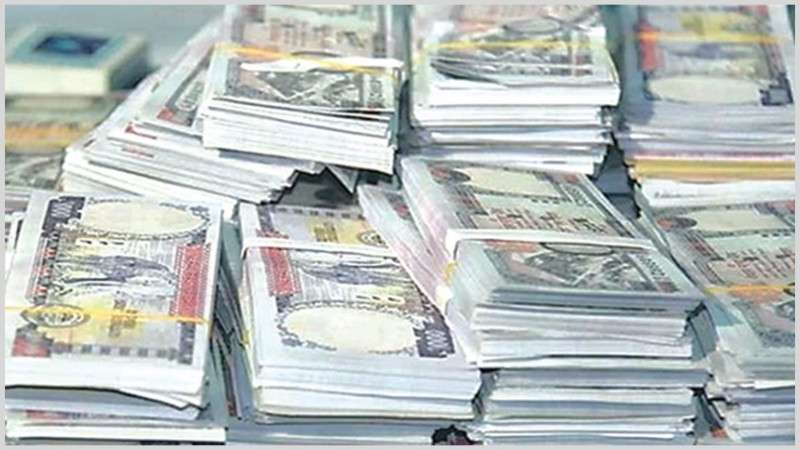May 25: With the improvement in the external and internal sectors of the economy, cash transactions in the market have also started to increase. According to the data published by Nepal Rastra Bank (NRB), it has been found that the cash in circulation in the market has increased in the month of Baishak (mid-April to mid-May).
According to NRB, by the end of Baishak (mid-May) of the current fiscal year (FY), the market had a cash circulation of Rs 623 billion. At the end of the last fiscal year (mid-July 2022), Rs 612.2 billion were in circulation, but in mid-May 2023, it increased by Rs 11.87 billion.
The cash in circulation had been continuously decreasing since the start of the current fiscal year. The circulation of cash in the market started to decrease with the decline in economic activities due to the outbreak of Covid-19 and the Russia-Ukraine war.
In the first month of the current FY (mid-July to mid-August), Rs 599 billion in cash was in circulation. After the government and NRB tightened the import and issued a tight monetary policy, the economic indicators improved. In Baisakh, the liquidity of banks and financial institutions in Nepal also increased.
In Ashar 2079 (last July), the deposits of banks were Rs 188 billion, and by the end of Baishak (mid-May), it climbed up to Rs 212 billion. Since the current year, the NRB has increased the mandatory cash reserve ratio (CRR), causing the deposits to increase.
According to the NRB’s latest Current Macroeconomic and Financial Situation Report, the country's balance sheet, foreign exchange reserves, reserve adequacy and other indicators have reached a comfortable level in Baishak.
Along with this, the bank's base rate and interest rate, which had reached a high point, have started to decrease, while there has been an improvement in deposit collection and loan disbursement, NRB said.
Along with the decrease in imports, the increase in remittances has also increased the foreign exchange reserves. In Ashar, NRB had a total of Rs 114.4 billion in foreign currency reserves, which increased to Rs 149 billion at the end of Baishak.
Due to the strict provisions of the monetary policy, the interest rate which has been continuously rising has started to decrease. Similarly, bank deposits and credit flow of banks have also started to increase.
NRB has reduced the bank rate by 1.5 percentage points to 8.5 per cent through the review of monetary policy.






















